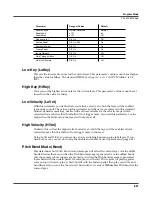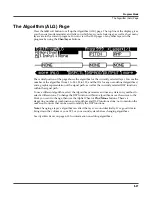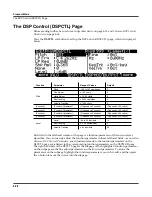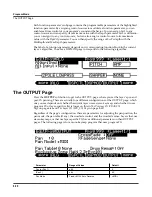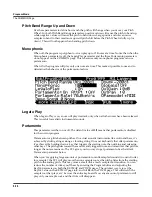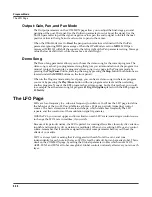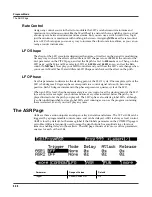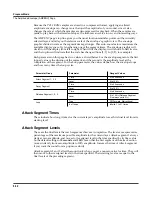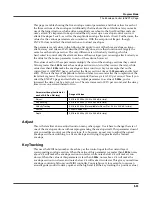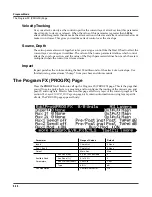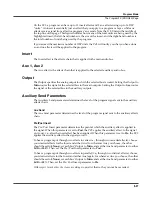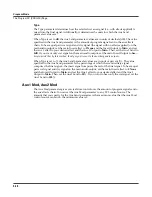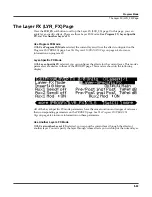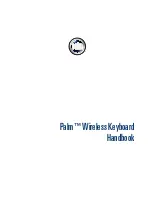
Program Mode
The COMMON Page
6-35
There’s a tradeoff here, since many sounds will change in timbre as these single sample roots are
pitch-shifted during the portamento. This will be most noticeable for acoustic instrument
sounds, and may not be noticeable at all for single-cycle waveforms like sawtooth waves.
Furthermore, some samples will not glide all the way up to the highest notes—there’s a limit to
the amount of upward pitch-shifting that can be applied to samples. If this doesn’t work for you,
you can compromise between the number of clicks and the amount of timbre change by further
adjusting the KeyTrk parameters on the KEYMAP and PITCH pages.
As long as the combined values of the KeyTrk parameters on both pages add up to 100, you’ll
have normal semitone intervals between keys. If you set both parameters to values of
50
, for
example, the sound will still play normally, and you’ll have several sample roots (about half the
number of the original sound) stretched evenly across the keyboard, instead of just one. This
will give you fewer clicks than in the original sound, but not as much change in timbre as setting
the KEYMAP KeyTrk value all the way to
0
. Set the KEYMAP KeyTrk parameter higher to
reduce the change in timbre, or set the PITCH KeyTrk value higher to reduce the number of
clicks. Just make sure the combined values add up to 100, to preserve the normal intervals
between notes.
Portamento Rate
The setting for Portamento rate determines how fast the current note glides from starting pitch
to ending pitch. The value of this parameter tells you how many seconds the note takes to glide
one semitone toward the ending pitch. At a setting of
12 keys/second
, for example, the pitch
would glide an octave every second. The list of values is nonlinear; that is, the increments get
larger as you scroll to higher values.
Attack Portamento
This parameter toggles between two types of portamento. When set to
On
, the PC3 remembers
the starting pitch so you don’t have to hold a note on to achieve portamento. The pitch always
glides to each new note from the previously triggered note. When set to
Off
, the pitch will glide
to the most recently triggered note only when the previous note is still on (in other words, you
must use legato fingering).
Globals
This is another toggle, which affects LFO2, ASR2, FUNs 2 and 4. When off, these three control
sources are local; they affect each individual note in the layers that use them as a control source.
They begin operating each time a note in that layer is triggered.
When the Globals parameter is set to
On
, these control sources become global, that is they affect
every note in every layer of the current program, they’re not specific to any one layer. When
these control sources are global, they begin operating as soon as the program is selected. When
Globals are on, LFO2, ASR2, and FUNs 2 and 4 will appear on their respective pages preceded
by the letter G to indicate that they’re global.
You’ll use global control sources when you want to affect all notes in a program uniformly, and
local control sources when you want to affect each note independently. For example, you’d use a
global LFO controlling pitch to create a
Leslie effect
on an organ sound, since you want the affect
applied to all the notes you play. You’d use a local LFO controlling pitch to create a vibrato for a
solo violin, since you want to be able to vary the rate and depth of the vibrato for each note.
Summary of Contents for PC3
Page 24: ...1 6 Introduction Options ...
Page 50: ...4 4 The Operating Modes Using the Modes ...
Page 174: ...7 54 Setup Mode The Utility Soft Buttons ...
Page 178: ...8 4 Quick Access Mode Making Your Own QA Banks ...
Page 204: ...9 26 Effects Mono Algorithms ...
Page 266: ...A 2 MIDI Implementation Chart ...
Page 308: ...Index x ...



